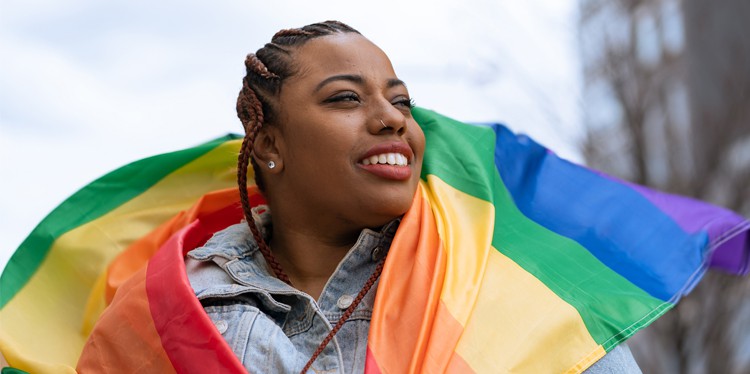Why is the LGBTQ symbol a rainbow?

The rainbow was chosen to represent the LGBTQ community by Gilbert Baker, a gay artist who wanted to make a proud statement through a symbol showing diversity. He believed that the rainbow was ideal because it is found in nature.
Gilbert Baker was sought out in the late 70’s by Harvey Milk, an openly gay official of the United States who asked Gilbert to come up with a symbol for the LGBTQ community. In 1978 the first LGBTQ flags were made. The original LGBTQ flag contained hot pink, turquoise and indigo and had eight colors. In order to meet mass production efficiencies, pink and turquoise was removed and indigo was replaced with blue. Today the LGBTQ flag contains six colors – red, orange, yellow, green, blue, and violet.
Common questions about the rainbow symbol
What do the colors represent?
- Red: life
- Orange: healing
- Yellow: sunlightDo the colors have a specific meaning? Yes, each color according to Gilbert had a specific meaning attached to it.
- Green: nature
- Blue: art & harmony
- Violet: spirit
In what year was the rainbow officially accepted as the LGBTQ symbol?
Although the original rainbow flag with eight colors was used in 1978 in San Francisco’s Gay Freedom Day parade, it wasn’t until 1994 that the rainbow flag was accepted as the symbol for the LGBTQ community.
Is the rainbow flag only a representation for the LGBTQ community in the United States?
No, the LGBTQ flag is an international symbol.
Sources
- Britannica.com: How did the rainbow flag become a symbol of LGBT pride?
- Bestlifeonline.com: Pride flag colors and their meaning
About the author
Sarah Rincon is a former Between Us program intern who is now a Licensed Professional Clinical Counselor.

